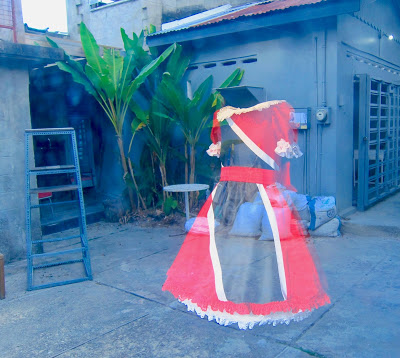A DRESS is a gendered thing. It makes us think of the guises adopted by women and men. Of the body’s impulse to conceal and reveal; to dress up and dress down. A Dress to the Nation, the outstanding new installation by Richard Rawlins at Alice Yard, is political in how it seeks to contrast bombastic presidential and prime ministerial speeches with a fading sense of patriotism. But the work’s most glaring questions relate to a different kind of politics: gender and performance.

Standing inert in a black box, it has an ambiguity that means it can be pictured, variously, on a girl, boy, a svelte woman or man. Just as the dress mirrors the national flag, it is mirrored by glass and echoed by the subtle use of sound.

“I can’t help but hear the song from the musical Annie playing in my head,” Rawlins, 50, says. What has gone astray in our wonderland is the fetishisation of the female: the placing of it behind a glass wall as if it is a strange, exotic thing, as if the only gaze that matters is the gaze of those who do not wear dresses, who scorn dresses, who regard them as markers of inferiority. The artist has given the nation a dress whose frills seem antiquated, whose noise comes from its smutty suppression, whose estranged body is at large, whose truth haunts us. Wearing its heart on its sleeve, it shows us the antagonistic link between the body of the citizen and the body of the speech-mongering statesman. It demands that we all be seen to be human.
Richard Mark Rawlins’ A Dress to the Nation was installed at Alice Yard, 80 Roberts Street Woodbrook, Port-of-Spain, and was available to the public any time from March 3- 8. Audiences could also find a related poster design by Rawlins at Alice Yard’s adjunct space known as Granderson Lab, 24 Erthig Road, Belmont.



